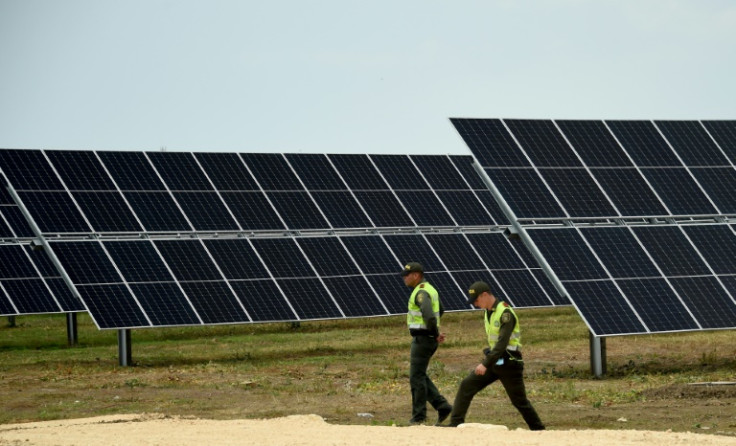Duke Energy To Construct First US Green Hydrogen Facility In Florida

The United States' first end-to-end green hydrogen facility will be constructed in Florida, Duke Energy Corporation announced Friday.
The Charlotte, N.C.-based power utility's new energy creation, storage and combustion demonstration facility will be constructed in conjunction with General Electric's GE Verona and management consultancy firm Sargent and Lundy. The system will be located at Duke's existing solar energy facility in DeBary, Fla., about 25 miles northeast of Orlando.
The proposed demonstration plant aims to display the commercial feasibility of similar facilities throughout the country. Construction is expected to last approximately one year, with the plant fully operational by the end of 2024, Duke Energy said in a press release.
Green Hydrogen: The Future For The Sun Belt?
Duke Energy's plans for the nation's first green hydrogen facility has the potential to mark a turning point in the transition to using liquid hydrogen as a fuel source in the U.S.
Green hydrogen is produced through electrolysis using electricity generated from renewable energy sources (typically solar, wind and geothermal energy); Duke Energy's facility meets this criteria because it uses solar energy.
"Blue" and "gray" hydrogen are often discussed in conjunction with green hydrogen; they are both produced using electricity derived from non-renewable energy sources, typically natural gas. Hydrogen fuel is considered vital for the decarbonization of energy-intensive sectors like fertilizers and steel, in addition to serving as a means of energy storage.
The location of Duke Energy's hydrogen facility is no coincidence: Florida is an ideal location for growing the large-scale solar energy plants necessary for eventually transitioning away from natural gas-fired power plants using green hydrogen.
Florida receives more sunlight than any other Southeastern state outside of Texas; it is already the #3 U.S. state by solar panel installations, with residential and utility installations increasing steadily since 2015.
And while local ordinances have prevented the development of offshore wind energy facilities (another potential input in the production of green hydrogen), Florida's solar energy industry has grown as a result of state policies like a tax exemption on the purchase of personal solar panels for Florida residents.
The company said its hydrogen ambitions extend beyond the Sunshine State. "Duke Energy anticipates hydrogen could play a major role in our clean energy future," said Regis Repko, senior vice president of generation and transmission strategy for Duke. "Hydrogen has significant potential for decarbonization across all sectors of the U.S. economy."
The results of the demonstration plant in Florida will help inform the decision-making of Duke and other utility providers regarding the location and timeline of future green hydrogen projects in the U.S. and elsewhere.
© Copyright IBTimes 2024. All rights reserved.






















